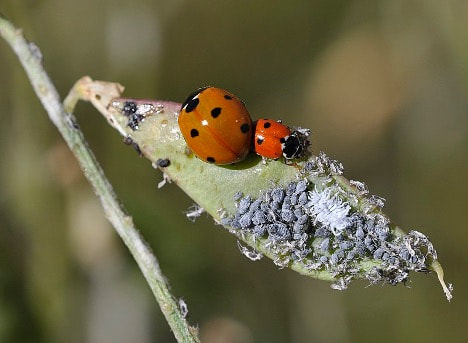|
Did you know that most brightly colored animals are using color to send a message? That message is, “Back off, I’m dangerous”. This phenomenon is called “aposematism”, which is a fancy way of saying that brightly colored animals are trying to tell you that they are poisonous, venomous, or otherwise unappealing when touched or eaten. For many animals, insects included, the more conspicuous the color, the more dangerous the chemical defense. However, recent studies show that for monarch butterflies, which are highly toxic, storing the toxins that make them less tasty to predators comes at a cost that can impact coloration. Scroll down to learn more about the tradeoffs between staying safe on the outside (deterring predators) versus staying safe on the inside (maintaining physical health) for aposematic butterflies. DRESSING FOR ATTENTION You’re probably familiar with monarch butterflies. Their bright colors, vast migrations, pollinator status, and species decline has garnered a lot of media attention. Monarch butterfly larvae are extremely specific when it comes to diet, and the only plant they will feed on is milkweed. This is also the only plant that female monarchs will lay their eggs on. The leaves of milkweed plants contain glycosides, which impact heart function. That makes the plant, and animals that can sequester the toxin of this plant in their bodies, toxic to many birds and mammals. Monarchs are able to integrate glycosides into their body tissues—making them unpalatable to predators. They advertise their toxic nature through their bright orange wings, one of the features that makes them so striking to look at. Aposematism, or being toxic and brightly colored, is common in nature. The result? Predators learn that brightly colored prey are best left alone. SNAPPY DRESSING IS EXPENSIVE
You can see the difficulty this causes for the butterfly. It is clear that aposematic animals, based on the findings in this study, need to fine tune the signaling they do with the toxins they sequester. Wearing all of this protective armor certainly leads to benefits in the sense that predators will definitely steer clear. We know that much is true. But, if the danger signal is communicated via color, predators are likely to respond more effectively to the color signal when the colors are very bright. But, as we just discussed, making this bright signal can lead to a physiological hit for the animal. Thus, the vicious cycle continues and the delicate balance between internal and external survival forges on. CONCLUSIONSInsects are vulnerable to consumption by a number of predators, especially birds and small mammals. Many insects defend themselves using venom or poisons and there are multiple examples of aposematism in the insect world: monarch butterflies, lady beetles, paper wasps, velvet ants—to name a few. However, this study shows that the balance between poisoning others and poisoning oneself is very delicate. It will be interesting to see how insects continue this balancing act, especially in light of continued environmental challenges/stress such as climate change, urbanization, and habitat loss. Will we see duller Monarch butterflies in the future? Time will tell!
0 Comments
Your comment will be posted after it is approved.
Leave a Reply. |
Bug Lessons BlogWelcome science communicators and bug nerds!
Interested in being a guest blogger?
Archives
November 2023
Categories
All
|

